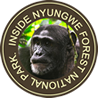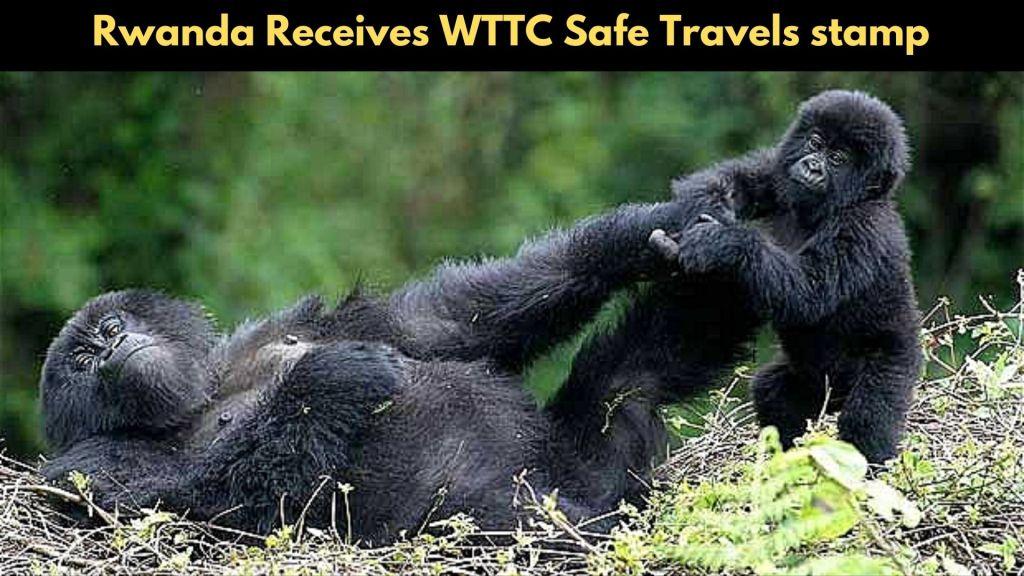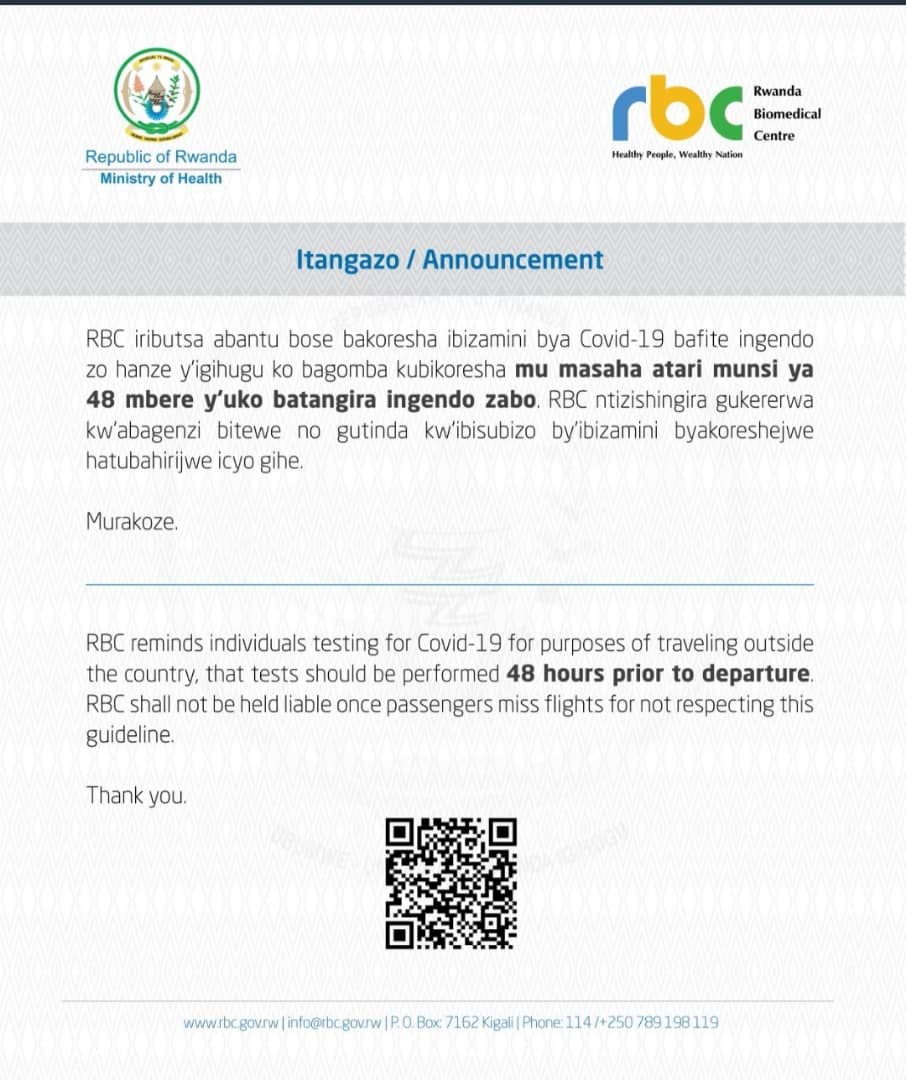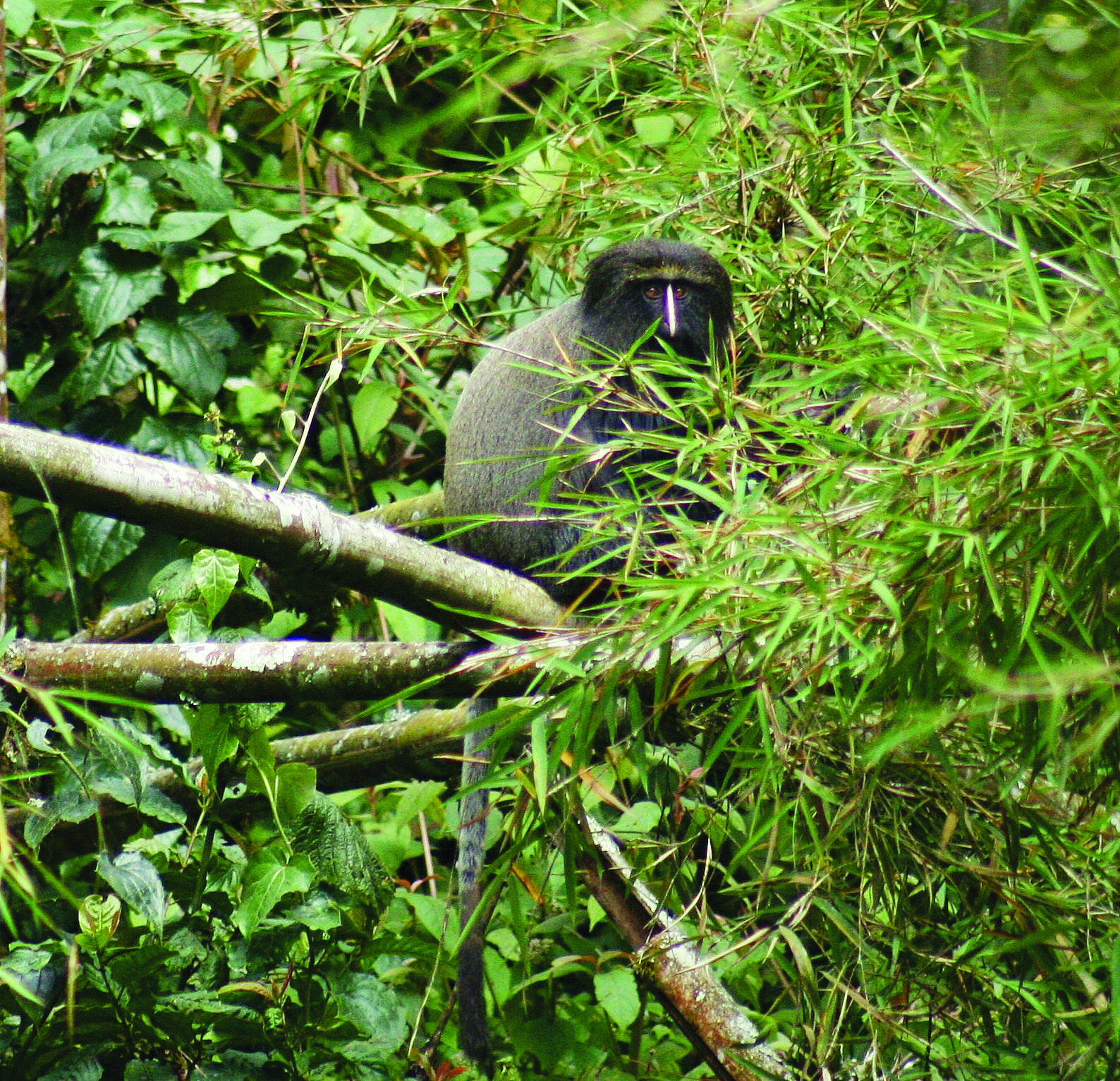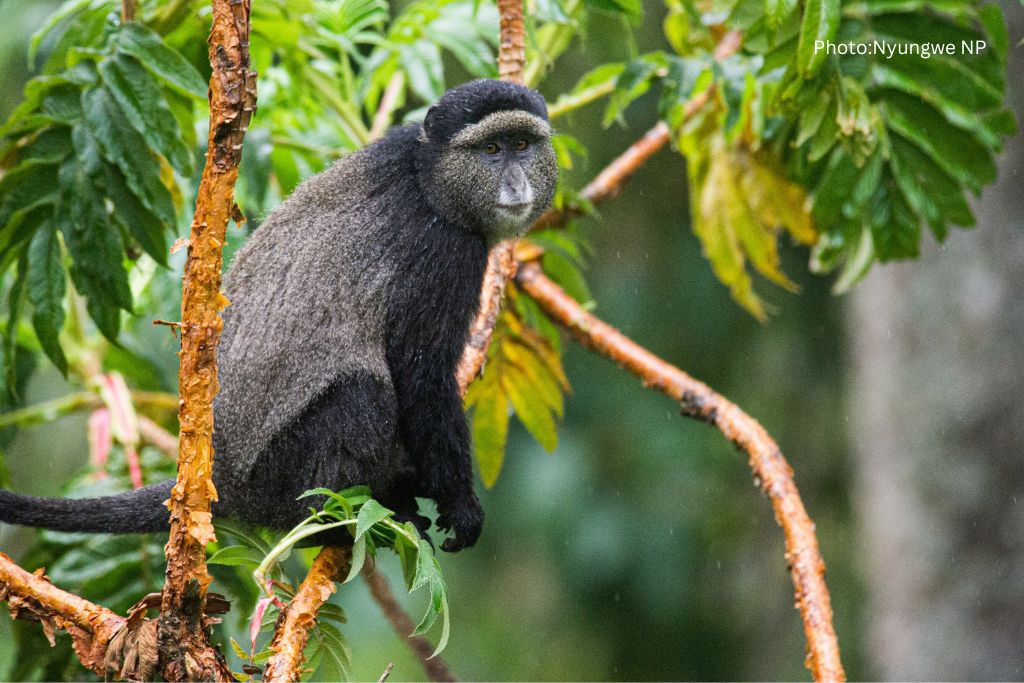
Primate Species in Nyungwe Forest
The primate species in Nyungwe forest are so incredible to discover, this is one of the remarkable primate spotting destinations in Africa with a quarter of the Continent’s species living in its 1000-square-kilometer area thus about 14 species are found here. Interestingly, two species of these primates (Owl-faced and L’Hoests monkeys) are Albertine Rift endemics. Nyungwe Forest National Park is one of the four National Parks in Rwanda, known for its incredible high wildlife diversity and endemism thus making it a biodiversity hot spot and one of Africa’s priorities for conservation.
There are primate species in Nyungwe Forest;-
Chimpanzee – Pan troglodytes
Scientifically referred to as “Pan troglodytes”, Chimpanzees are the commonest and most sought-after primate species in Nyungwe Forest with over 500 of them calling this Forest home. These highly-intelligent Great Apes are categorized as “endangered” under the IUCN Red List and live in communities, which daily divide into groups of different sizes to find food. Chimpanzee trekking safaris in Rwanda are so popular here. Nyungwe has two communities that have been habituated- the bigger one comprising 60 members living in the main Nyungwe Forest and the smaller one with about 30 members living in the adjacent Cyamudongo Forest. Book Now
L’Hoests Monkey – Cercopithecus lhoesti
Endemic to the montane forests of the Albertine Rift Valley, L’Hoests Monkeys are also found in Nyungwe Forest National Park. This Park is the only place where these unique primate species have been habituated and studied exhaustively. These monkeys also live in the tropical rainforests (primary and secondary forests) and are marked by their short dark gray hair, large chestnut saddle patterns on their backs, as well as the distinctive large patch of white fluffy fur from their throats across the sides of their heads to their ears. L’Hoests monkeys’ limbs and bellies are black.
Owl-faced Monkey– Cercopithecus hamlyni
Also referred to as Hamlyn’s monkeys, the owl-faced monkeys are species of Old World monkeys that occupy the Bamboo and Primary rainforests of Uganda (Kibale Forest), Northwestern Rwanda, and the Eastern part of Congo. They are known for their greenish-gray and black underparts and forelimbs, silver-gray backs, and tail tips. Their name was derived from the white streak that runs down the length of their noses hence giving them an owl-like appearance.
Mona Monkey – Cercopithecus mona
Another beautiful primate species in Nyungwe Forest is the Mona Monkey, found in the lowland forests of West Africa between Ghana and Cameroon, and surprisingly in Nyungwe Forest. Mona monkeys have deep brown upper parts of their bodies and outer sides of their limbs as well as creamy-white underparts and inside of their limbs. These monkeys also have a patch of white hair at the base of their tails, resembling callosities in Baboons. They live in troops of about 12 members with an Alpha male and the group moves together through the canopy feeding on flowers, fruits, insects, seeds, and many different invertebrates.
Blue Monkey – Cercopithecus mitis doggetti
Blue monkeys are native to East and Central Africa and in Rwanda, you can find them in Nyungwe Forest National Park. Also referred to as “diademed monkeys” “Sykes monkeys”, or “Silver monkeys”, they are actually not noticeably blue but rather the fact that the little hair on their faces exhibits a blue appearance. They have Olive or gray bodies, dark faces with pale or yellowish patches on their foreheads.
Golden Monkey – Cercopithecus mitis kandti
It normally surprises tourists that Golden monkeys are also found in Nyungwe Forest National Park besides being in Volcanoes National Park, although they are not habituated for trekking. These primates are species of Old World Monkeys and are restricted to highland forests close to Bamboo. They are known for their golden-orange patch on their backs and upper flanks and live in social troops of up to 30 members. Golden monkeys mainly feed on young bamboo shoots, leaves, flowers, fruits, and bamboo branchlets among others.
Red-tailed Monkey – Cercopithecus ascanius schmidti
Also found in Nyungwe Forest are the lovely red-tailed monkeys, known for their black, dark grey body fur, yellow or white noses, white cheeks, and long reddish tails (up to 35 inches long). These incredible monkeys normally communicate with different methods that include physical and vocal communication to show greeting, social dominance, and submissiveness.
Vervet Monkey – Chlorocebus pygerythrus
Possibly the commonest in Nyungwe Forest National Park, Vervet monkeys, or simply Vervet are small and black-faced with greenish-Olive or Silvery-gray bodies. Their tail tips, ears, feet, and hands are also black but with a visible white band on their foreheads which perfectly blends in with their short Whiskers. Male Vervet monkeys are normally bigger than females and easy to identify by their Turquoise blue scrotums as well as red penises.
Grey-cheeked Mangabey – Cercocebus albigena johnstoni
Grey-cheeked Mangabeys are also found in Nyungwe Forest and are habituated for tracking. These Greyish-black primates are sometimes mistaken for small hairy baboons due to their thick brown fur that is almost black in their forest habitats and has golden manes around their necks. They mainly occupy forests (primary forests, and sometimes in secondary forests) or swamps. They live in troops of 5-30 individuals with single or multiple males without a dominant male.
The Rwenzori Black and White Colobus – Colobus angolensis Rwenzori
Sometimes referred to as simply “Rwenzori Colobus monkeys”, these primates are found in the Afromontane forests of Rwenzori Mountains across the mountains of Rwanda, Burundi to the Northern shores of Tanganyika Lake. They are identifiable by the black hair on their shoulders (extending 9.1 to 13 inches long), black and greyish white tail tips, bushy tufts on their cheeks, and white hair on foreheads that form a crest.
Eastern Needle-Clawed Galago – Galago inustus
Also known as the “Needle-clawed Bushbaby”, this nocturnal primate lives in the tropical rainforests of West-Central Africa including Nyungwe Forest National Park. It feeds on tree back exudate (fluid that leaks out of trees), and normally clings upside down to tree barks by digging with its sharp-pointed claw-like nails.
Greater Bushbaby – Galago crassicaudatus
This primate occupies the woodland and forested areas, as well as the sparsely wooded grasslands of Nyungwe Forest National Park. It is a nocturnal animal with a rounded head, short, wide snout, and very large ears, as well as long fingers and toes with flattened nails.
Dwarf Galago – Galago demidovii
This is one of the World’s most endangered primates and is rarely spotted in Nyungwe Forest National Park. It is also the smallest of all Galago species and weighs only about 60 grams.
Olive Baboons – Papio anubis
Olive baboons are also found in Nyungwe Forest National Park with an average of 30 kilograms hence making it slightly smaller than the chacma Baboon. This Olive-colored primate has a large mane of hair all over its head and shoulders.
